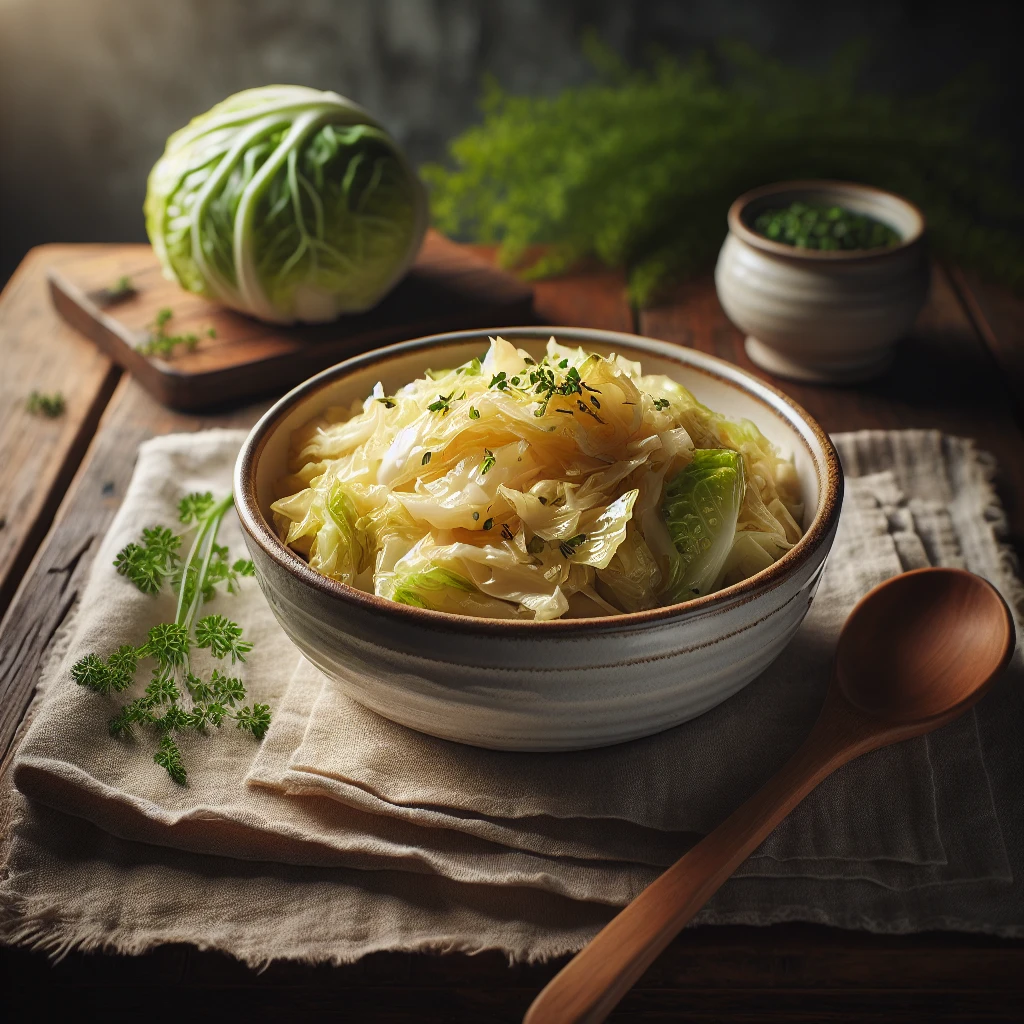
If you've never thought cabbage could be a star on your dinner table, this traditional sautéed cabbage recipe might just surprise you. It's a simple dish with a depth of flavor that brings warmth and comfort to any meal. Perfect for a side dish or a light main course, it marries humble ingredients with timeless techniques.
Butter: Essential for sautéing, it provides a rich base flavor that enhances the sweetness of the cabbage as it cooks.
Onion: Adds a layer of sweetness and complexity. As it softens and caramelizes, it complements the cabbage perfectly.
Garlic: Offers an aromatic punch. Its fragrance rises as it cooks, infusing the dish with a savory depth.
Cabbage: The star of the show, it transforms from crunchy to tender, soaking up the flavors around it.
Salt and Black Pepper: Simple seasonings that elevate the natural flavors of the dish.
Fresh Parsley: A pop of freshness and color, adding a subtle brightness to the final dish.
Apple Cider Vinegar: Introduces a slight tang that balances the sweetness and adds complexity.
This sautéed cabbage pairs wonderfully with roasted meats like pork or chicken. For a vegetarian option, consider serving it alongside a hearty grain like farro or quinoa. It's also delightful tossed into pasta or as a topping for grilled sausages.
Start by melting the butter in a large skillet over medium heat. You want it to foam gently, not brown, so keep an eye on it. Once it's ready, add the sliced onion. Sauté these for about five minutes, stirring occasionally until they turn translucent. This step is crucial as it sets the stage for the flavors to meld.
Next, stir in the minced garlic. It only needs about a minute to become fragrant, so don’t wander off! This quick addition ensures the garlic doesn’t overpower but instead complements the onion.
Now, add the sliced cabbage to the skillet. Toss it well so each piece gets a little love from the butter and onions. Sprinkle the salt and pepper over the cabbage, then continue to cook, stirring every so often. You're looking for the cabbage to become tender and slightly caramelized, which should take around 10 to 15 minutes.
Once it’s beautifully caramelized, remove the skillet from the heat. Stir in the fresh parsley and apple cider vinegar. The vinegar adds a nice tang, cutting through the richness of the butter. Give it a taste and adjust the seasoning if needed. Serve it warm and enjoy!